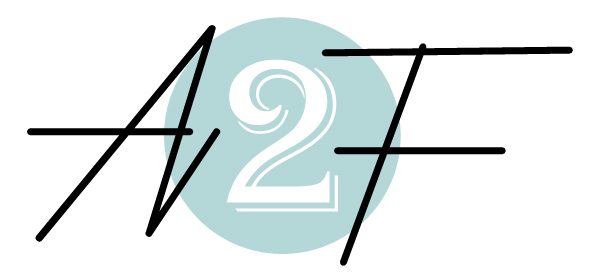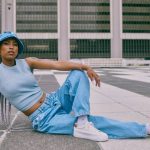Fashion metropolises influence the fashion industry and are a major influence on it. Today, marquee designers dominate. The fashion industry is affected by global consumer preference and the fashion ecosystem, which all leading companies, fashion houses, and designers in cities drive. The fashion industry has not been severely affected by the global COVID-19 outbreak.
The pandemic has had a major impact on young designers. They will not be able to escape the pandemic unscathed, but there are some solutions they can consider.
Fashion metropolises influence the fashion industry and are dominated by a few marquee designers. The fashion industry is affected by global consumer preference and the fashion ecosystem, which all leading companies, fashion houses, and designers in cities drive. The fashion industry has not been severely affected by the global COVID-19 outbreak. This disease’s outbreak has primarily affected leading/emerging designers and high-end fashion retail stores. Fashion designers have devised creative marketing and sale strategies to clear their Autumn/Winter inventory. Designers are not able to generate sales despite heavy discounts online and offline. Brands are restructuring their marketing plan because we are currently in the middle of a global economic recession.
Many emerging designers compete in the fashion world and give it a new feel. PR fashion agencies and consulting firms, as well as small fashion design companies and special apparel service providers, help to market and promote the collections of ace and emerging talent.
No matter how big or small, the goal of every textile and apparel company is to create value for consumers by offering them products and services. They focus on products with high marginal values and low operational costs. Brands have shifted their focus from traditional marketing to their digital presence in order to boost their visibility and sales. Emerging designers must have a well-structured venture launch and solid business foundations in order to survive their first difficult years as entrepreneurs.
Below are a few challenges that new-age designers face and some possible solutions, both short-term as well as long-term.
Financial Stress: Surviving this crisis is a challenge for all industries. Fashion designers who are just starting have a hard time planning their production and inventory. Cost-cutting is common because sales are limited. Many designers have cut back on their staff in order to reduce their overhead expenses and stay afloat. Financially, new fashion designers have a greater burden. They cannot pay their karigars the full wage. They outsource manufacturing and work with suppliers because they are a small business with limited resources. In order to avoid a shortage of funds, the payment of suppliers is another problem. The result is that orders are being canceled.
- Product Manufacturing & Outsourcing: Emerging designers have been trying to launch an alternative range of fast-selling essential products at a reasonable cost to keep business afloat. The manufacturing costs, distribution costs, and marginal value are taken into account when determining the price of a product. Profits aren’t taken into account at all. They are having difficulty producing their products because they cannot afford to pay for their units. They are trying to find manufacturers to outsource the work. Manufacturers aren’t interested in working with designers who have a limited scope of work. Designers are forced to pay additional fees and choose expensive production units in order to prepare their collections. To compete with their rivals, they have to offer cheaper products. For cash flow issues, many new-age designers have taken up the opportunity to work with major retailers.
- Customer Relationship: Emerging designers have worked harder to gauge their target audiences from different cities in order to create relationships with their clients and generate maximum orders via digital/offline channels. As they chase new trends, these designers don’t get many repeat customers.
- Distribution: distribution can be a problem for emerging designers as they struggle to reach their multi-designer stores. They reach out to platforms/stores that have a strong market presence and visibility. Due to the increased competition and market leaders, it has become more difficult for them to sell their products in large marketplaces.
Short Term Solutions
- Scalable business model: The biggest concern for designers during this pandemic has been sales. Consumer behaviour has changed dramatically, as have their purchasing habits. Designers have strategically planned a business model that is scalable and will increase their sales target.
- Social Media Engagement and Affordable Price Points: To survive the crisis, emerging designers must promote their products for an affordable price. This time can be used to increase sales with a real perceived value, and through strategic marketing. Fashion designers should focus on sharing useful content and engaging with their fans on social media platforms. For example, hosting flash sales, discussing why they chose their profession, what sets their brand apart, the USP of their products, educating followers about sustainability, etc. Designers can use live chats to answer common questions from their customers.
- Fashion Merchants: With the rise of online consumption, it is important for designers to think about viable fashion ecommerce platform for retailing purposes — platforms that provide promising sales by a large customer base. Designers should hire merchandisers to help them smoothen their onboarding/retailing process for their desired platforms. Consider virtual pop-ups to reach out to NRI clients.
- New sales verticals: Designers are able to branch out and expand their reach by launching additional verticals such as bespoke designing, customization, and styling services. To generate more revenue, they can work with other brands to improve their product design, stitching or other production processes.
Long Term Solutions
Designers should look at B2B partnerships as a way to generate recurring income. This means working with other designer brands and fashion houses to mass produce their collection. It can increase their visibility, boost their sales and give them publicity.
- Manufacturers for Other Brands: Designers are also capable of manufacturing products and supplying them to other brands. For example, a high-end jewellery designer also struggles with their production/manufacturing due to labour costs, lack of productivity of their karigar, problems in sourcing the raw materials and searching for vendors who offer higher quality of production and finishing can collaborate with other designers and outsource their production. A jewellery designer who runs a small company can be the sole supplier and manufacturer for their brand, and accept bulk orders every season.
- Direct international sales: Designers should also focus on building relationships with NRI clients in order to guarantee constant sales over the long term. To increase sales and reach, they should contact independent fashion curators or sales representatives to showcase their collections at global social events. They can hire the agent or sales representative to represent their brand on the international market.
- Join Market Groups: These are groups that allow independent designers to network, share information, and test out their products before they launch them on the market.
- The Big Designers can support the Small Designers. It is important to balance sales via B2C customers and B2B partnerships to get maximum mileage. We must work together to support each other and grow the community. When big brands and designers help emerging designers, there will be a surge in orders. Consumers will also be encouraged to purchase products with a lower price and better quality. The fashion industry will also benefit from this act of cooperation.




